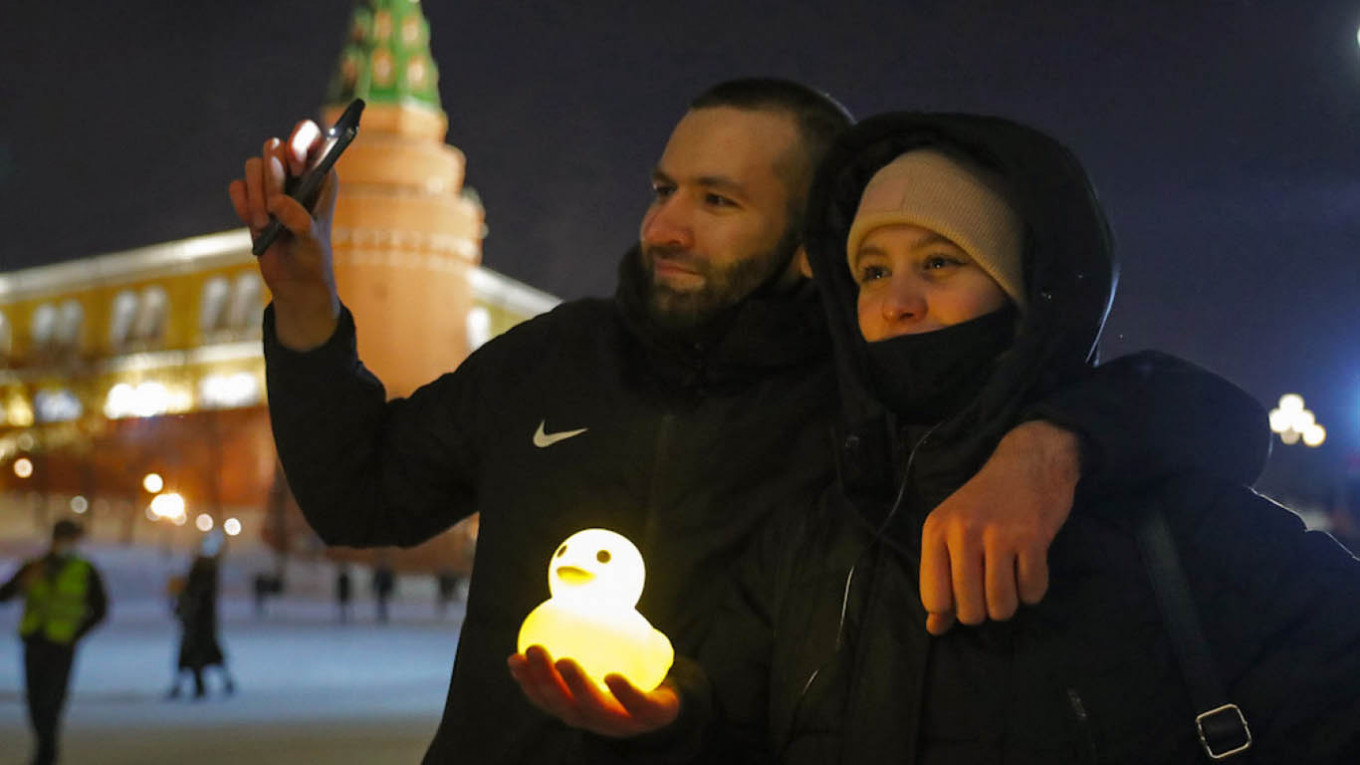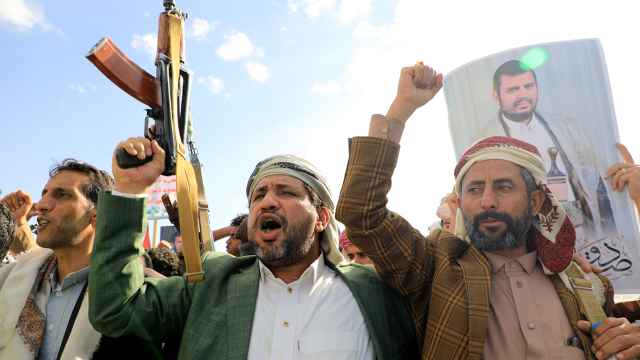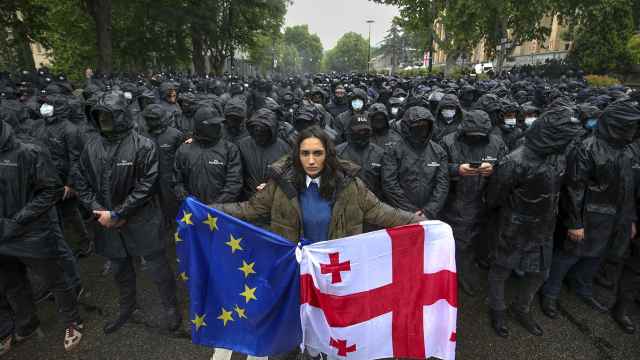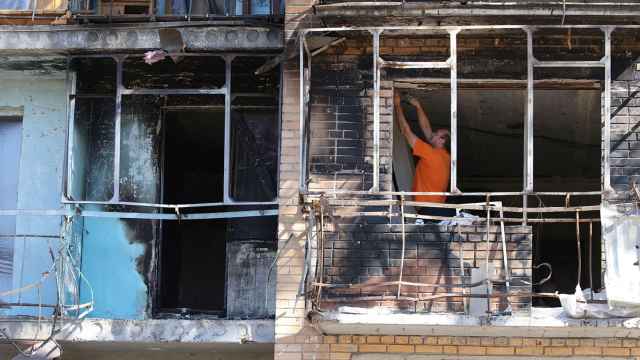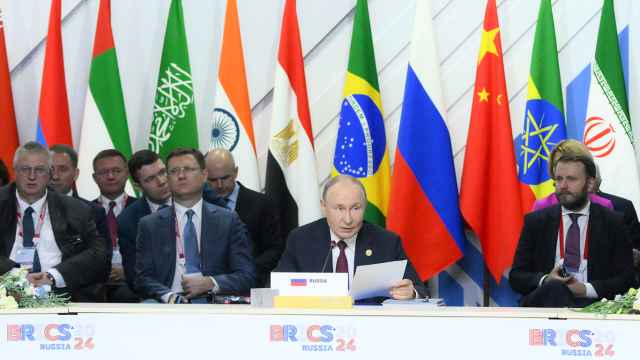From torch-waving flashmobs in residential courtyards to claims that Alexei Navalny is just a puppet of Western subversion and containment, with the opposition’s decision to end regular street protests, their campaign against the Kremlin has moved into a new, ‘phoney war’ stage.
Everyone knows that some day the protests will start again, and the OMON will be back in their riot gear, but for now the struggle acquires a new dynamic and so Team Navalny must develop and adopt new strategies.
They have realized that trying to maintain the tempo of street protests, especially in light of the Kremlin’s evident willingness to escalate the muscularity of its responses, was foolish.
The regime clearly would rather not turn to mass repression if it can avoid it — that is a one-way street towards constant dependence on violence, dependence on the security apparatus, and turning peaceful protest into direct resistance.
Nonetheless, it has many options short of that, and was clearly willing to escalate.
Besides which, it is not just that holding more street rallies and marches would put people into harm’s way, it is that there would likely soon be an embarrassing dip in number of attendees. Such movements live and die by momentum, and the risk of looking as if they were ‘losing’ — in politics, perception is all — would lead to a further decline in morale and credibility.
Redefining the battlespace
So, like any good insurgent, they have sought to redefine the conflict in ways to their advantage.
In order to maintain that sense of momentum, and the all-important sense of being part of something greater (and something cool), they are starting a campaign of flash mobs and non-confrontational happenings, which began with a call for people to come out on Valentine Day’s evening and shine torches and take selfies under the rubric ‘Love is stronger than fear.’
This may not exactly be revolution as Lenin or Che Guevara thought it, but considering how far Navalny has been a social media phenomenon, it is entirely fitting.
The question will be how to come up with newer, cooler, more interesting, more Instagrammable (or Telegrammable) initiatives to follow, to bridge the gap before street protests start again. In this respect, they are apparently looking across the border to Belarus for both ideas and also inspiration that such actions can sustain a movement.
The opposition needs also to work on its transition from dissent to movement.
Twitter and YouTube are great platforms to spread a message, but Team Navalny realized some time back that, especially given their need to push their ‘Smart Voting’ initiative, they needed an institutional network around the country.
It is not just that the revolution will not be televised, it will not be tweeted, either. In other words, it needed a network of activists able to develop connections with local elites, civil society and populations alike, and to modulate national messages to reflect regional interests and concerns.
The Kremlin has repeatedly done everything it can to prevent Navalny from registering a political party.
Nonetheless, what Team Navalny now has to do is build the structures of a national party by any other name, even if it never stands in elections on its own account.
This is the essence of the network of local Team Navalny HQs, but this is still a flimsy and attenuated one, that needs building up, especially before September’s Duma elections.
Of course, maybe you can co-opt instead of creating?
Although it is early days, there are suggestions that elements of the ‘systemic opposition’, primarily the Communist Party (KPRF) may be getting tired of the supinely lumpen policies of their gerontocrats.
The KPRF, after all, could be said to be made up of three elements: the ‘careerists’ like 76-year-old party leader Gennady Zyuganov and his 70-year-old deputy Ivan Melnikov, who are essentially happy to play their role as the fake opposition; the rump ‘veterans,’ largely older Soviet-nostalgics; and the ‘progressives,’ a younger generation of activists who range from genuine communists to liberals.
There have been signs for some time of, if not an alliance, at least an ideological sympathy between the KPRF progressives and Team Navalny.
Nor is this coming just from the grassroots. Moscow party head Valery Rashkin was implicitly reprimanded by Zyuganov for not joining the chorus of disapproval of Navalny, and State Duma deputy Alexei Kurinny and Sergei Levchenko, the still-influential former governor of Irkutsk both supported the protests.
Whether this will, as some excitedly suggest, lead to a full-blown split within the KPRF is unclear. It is more likely that there will be pressure on some progressives, maybe the expulsion of others.
After all, the structures of the KPRF — the only truly functional nationwide political machine not wholly bought and paid for by the Kremlin — would represent a powerful asset if any defected to Team Navalny.
What do you do with an absent friend?
But perhaps the most taxing dilemma for Team Navalny is what to do with and for the man himself, now that he faces the likelihood of years in the penal system.
In 1928, a fascist prosecutor declared of the Italian Communist thinker Antonio Gramsci, "we must stop this brain from working for 20 years."
Sent first to internal exile on the tiny island of Ustica, Gramsci would never see freedom again. With Navalny, at the risk of sounding glib, the state seems to hope that they can stop his YouTube account from working, instead.
In other words, that without his presence at rallies, his lacerating commentaries on video exposés of corruption, and his capacity to mobilize and inspire his supporters, he becomes another forgotten hero.
So of course, that is what Team Navalny must try to prevent. After all, while Leonid Volkov, Navalny’s chief of staff and current proxy says that he has a gut feeling "that he will be free quite soon, sooner than many are expecting," this is not a feeling many observers share.
To be blunt, although it could be a Machiavellian move to let him go free now, a gesture of confidence and contempt, today’s Kremlin appears not to favor risky and potentially too-clever-for-its-own-good gambits. Instead, it puts its faith in strong locks and high walls.
The thought that any level of probably foreign pressure will get Putin to free the man now being hailed as his number one foe is far-fetched.
When Navalny flew back to certain arrest, it was a startling act of courage, but also no doubt a calculated one. It elevated him from critic to politician, and set him apart from a cohort of expatriate oppositionists by demonstrating his willingness to put his own life and freedom on the line.
This is a powerful tale of confident and moral authority.
But stories only matter if they have tellers and audiences.
With the state and state-adjacent media now let off the leash and doing their best to blacken the name of the man whom until recently they were abjured from mentioning, it is clear that getting people to have heard of Navalny is only the first battle in the campaign. As of recent Levada Centre polling, 19% of respondents approve of him, 56% disapprove, and only a quarter support his return to Russia (more than half just don’t care).
Of course, much of this is predictable: the more respondents relied on TV for their news, the more critical they were, just as the younger they were, the more positive. The question is, how far does this matter?
When they came out to protest, it seems that most people were not there because of Navalny as such. Instead, the prospect of a march brought out the ‘coalition of the fed-up,’ mobilizing people who had all kinds of different reasons to feel dissatisfied with the status quo.
That is at once a strength and a weakness. It presents a possible constituency that is much greater than simply those who like Navalny or share his views in detail.
However, unless converted into ‘Navalnyites,’ they could as quickly turn away if offered no hope for change, or if someone else comes along who appears to be a more useful or appealing champion.
So while Navalny-the-convict is slopping out or sewing shirts in a distant labor colony, how can Navalny-the-symbol be crafted to maintain his status and maximize its value to his movement? Will they try to pretend it is business as usual, that he has just stepped out of the office for a moment? Try and craft an image of a moral icon?
Whatever they do, they cannot allow him to be forgotten.
Gramsci meets Navalny
Gramsci developed the notion that the power of the state is based not simply on coercion, but through the manufacturing of consent.
In other words, that states seek to assert hegemony, the capacity to shape the consciousness of society and its sense of what is right and what is possible. This is certainly true of Putin’s system, which has sought to convince people that change is impossible, illegitimate or dangerous — and largely succeeded.
In response, Gramsci argued, revolutionaries could employ either a war of maneuver or a war of position.
The war of maneuver is the exciting, dramatic confrontation. It can work when the state is fragmented or uncertain and society independent of the rulers.
Absent those conditions, though, it leads to disaster and defeat. And Russia? Well, the regime still seems united and determined and society’s independence is questionable.
In some ways, the Kremlin’s ability to out-escalate the protesters during the three recent protests represents a defeat of a kind of war of manoeuvre style offensive.
It could almost certainly crush the overt manifestations of the opposition, even if not the underlying dissatisfactions behind it.
So Team Navalny will have, at least for now, to wage the war of position, a slow struggle against the state’s hegemony, through everyday, indirect and collective action. It may sound grandiose, but the aim is to redefine political reality for all, or at least enough Russians.
It is not simply about getting people out onto the streets, nor spreading the word about ‘Smart Voting.’
Videos about another corrupt scheme or opulent dacha get clicks, but aren’t going to shame the elite out of power. Somehow, though, all of those together, with the alchemy of charisma and élan, may, slowly, begin to win the war of maneuver.
Yes, you can. Vote for change. The hammer and sickle. No surrender. Che Guevara on a t-shirt. Taking the knee. The tricolour cockade. Give me liberty, or give me death. Red-and-white clothing. The wars for hegemony and cultural capital often get distilled into slogans and memes, however much programmatic baggage and historical depth there may be behind them.
The question is whether and how Navalny-the-symbol can fit into this cultural struggle. Navalny t-shirts and iphone covers, anyone?
This article was first published by the Raam op Rusland.
A Message from The Moscow Times:
Dear readers,
We are facing unprecedented challenges. Russia's Prosecutor General's Office has designated The Moscow Times as an "undesirable" organization, criminalizing our work and putting our staff at risk of prosecution. This follows our earlier unjust labeling as a "foreign agent."
These actions are direct attempts to silence independent journalism in Russia. The authorities claim our work "discredits the decisions of the Russian leadership." We see things differently: we strive to provide accurate, unbiased reporting on Russia.
We, the journalists of The Moscow Times, refuse to be silenced. But to continue our work, we need your help.
Your support, no matter how small, makes a world of difference. If you can, please support us monthly starting from just $2. It's quick to set up, and every contribution makes a significant impact.
By supporting The Moscow Times, you're defending open, independent journalism in the face of repression. Thank you for standing with us.
Remind me later.



